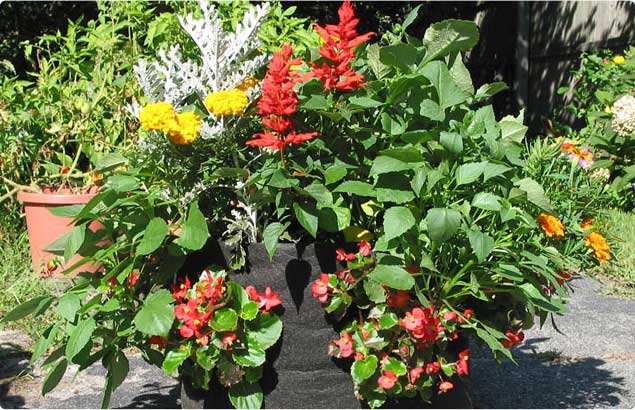Spring Garden Ideas That Dazzle: 3 Garden Combos You Absolutely Must Try
There’s something in the air. You can feel it in your bones. Yep, it’s planting season again. This year why not try something a little different? Shake things up with unexpected combinations that will make your garden pop. Here are three of our favorite spring garden ideas that serve up some serious eye candy.
Tulips with Allium.
Available in a wide variety of fiery colors, tulips are hard to beat. Spice up your garden with exotic varieties like Fosteriana, also known as the Emperor Tulip. These beautiful cultivars produce huge blossoms six or more inches across. Or add some Parrot Tulips to your plot. This dramatic variety produces blazing stripes that are mesmerizing to the eye.
Famous for their giant purple spheres, alliums can make you feel like you’re in Willy Wonka’s factory. But don’t be fooled. These enormous flowers come in eye-catching reds, blues, whites and spotted varieties. They’re excellent for adding some marvelous color to your garden.
Tulips bloom in April and May while Alliums prefer June. By planting them together, you’ll have hypnotic spring flowers blooming for months. If you want their flowering cycles to coincide, look for late-blooming tulip varieties. Late-blooming tulips will overlap with your alliums for several weeks in early June.
Dahlia with Gladiolus.
Dahlia is a truly spellbinding species. Named the national flower of Mexico in 1963, it comes in a number of radiant varieties. The Anemone-flowered, Waterlily, Ball, Pompon, Semi cactus, and Single Orchid cultivars are especially striking. Once grown as a food crop by the Aztecs, Dahlia’s flowers spring up from tubers. They grow naturally in frost-free climates, so be sure to plant them when the risk of a hard frost has passed.
Gladiolus is a perennial from the iris family. Native to the Eastern Hemisphere, it’s available in hundreds of colors and varieties. Most cultivars grow tall, narrow stalks that sprout vertical columns of blooms.
Both of these spring plants grow fairly tall — up to five feet for Dahlia and six feet for Gladiolus. They also both enjoy full sun. So the best match for these companions is a side-by-side planting arrangement. Make sure they get at least eight hours of full sun a day, and feast your eyes on a polychromatic extravaganza.
Hydrangea with Rhododendron.
Hydrangea is a flowering shrub that starts small and grows to massive proportions. Depending on the variety, these spring plants can reach up to 20 feet in height. They produce large bouquets of clustered blossoms in a range of eye-catching hues. But there’s no need to worry about them taking over your garden. Hydrangeas are easily pruned. For maximum blooming power, they need two to three hours of morning light with dappled light or shade in the afternoon. Lovely Lacecap, L.A. Dreamin’, and Peppermint Swirl deliver splashes of beautiful pink and purple.
Rhododendrons vary greatly in size, from small shrubby plants to full blown trees. Compact varieties include Pink Sherbet, Ramapo and Wee Bee, all of which produce vibrant blooms. Like hydrangeas, rhododendrons prefer partial shade, making these two spring plants ideal partners.
When planting Rhododendron and Hydrangea together, consider your available space. If you have a generous swath to work with, consider spacing your plants out over a large area and letting them fill in over several years. If you’re working in a smaller space, choose compact varieties and keep them pruned according to schedule. Whatever your strategy, you’re sure to enjoy a spectacular spring show.
As spring casts its annual spell, consider some new and fantastic combinations. With your green thumb and a little imagination, your spring gardening ideas will reward you with an awe-inspiring display of color.






